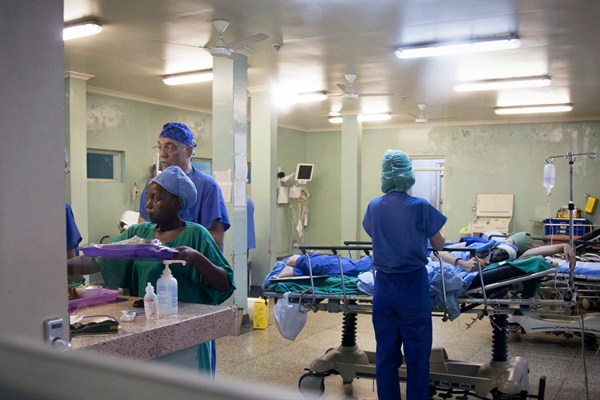In mid-April, a spokesperson for the Ugandan government admitted that the country’s only functioning cancer treatment machine had broken earlier that month. The radiotherapy machine, donated by China to Uganda in 1995 and housed at Mulago Hospital in Kampala, is now considered beyond repair. While the government did acquire a second radiotherapy machine in 2013, it has not been operational because of delays in allocating 30 billion shillings—just shy of $9 million—to construct a new building to house it. The funding delay has lifted, but the machine won’t be up and running for at least six months. The government has announced plans to airlift some cancer patients to Nairobi for treatment, but that plan will only accommodate 400 of the estimated 17,000 to 33,000 cancer patients who need treatment annually in Uganda.
This breakdown of technology is a human tragedy for the cancer patients from Uganda as well as elsewhere in East Africa that the radiotherapy machine helped treat. Beyond the personal level, though, the episode illustrates a larger shortcoming in global health. Total annual development assistance for health is approximately $36 billion, but that funding is overwhelmingly concentrated on specific infectious diseases. Noncommunicable diseases like cancer receive relatively little international funding—only 1.3 percent in 2015, and the dollar amount has declined since 2013. Funds to strengthen health systems, geared toward building and supporting a resilient health care system, are similarly low, making up only 7.3 percent of development assistance in 2015. Noncommunicable diseases kill more people every year than infectious diseases and accidents do, but this balance is not reflected in global health spending.
These shortcomings also speak to larger problems in global health around issues of technology transfers and long-term commitments to keep that technology working. It’s one thing to provide necessary medical technologies in the first place; it’s another to ensure that those technologies are accessible and operational going forward. Despite the importance of technology transfers, questions of long-term support for them have received relatively little attention from the global health regime. As noncommunicable diseases like cancer cause an even-higher proportion of deaths each year, it will become all the more imperative that the international community address this gap in sharing and funding crucial health care technology.

